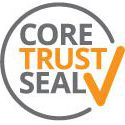- Submit data
- Submission guidelines
- Sea level data
Sea level data submission
The following provides details for assembling a sea level data set for submission to BODC. Instructions for other data sets and general details for transferring the data to BODC are available from the main data submission page.
Data standard
Raw and quality controlled water level data should, whenever possible, be stored at the original sampling frequency. For water level data, hourly observations are recommended as a minimum.
All parameters must be clearly specified and described. If parameter codes are to be used, then these must be fully documented or the source data dictionary must be specified. Parameter units must be clearly stated. Parameter scales must be noted where applicable. If computed values are included, the equations used in the computations should be stated.
All relevant calibrations should be applied to the data including laboratory and field calibrations. Instrument calibration data should be included in the data file. The data should be fully checked for quality and flagged for erroneous values such as spikes, gaps, etc. An explicit statement should be made of the checks and edits applied to the data. If any data values have been removed, the times of the removed values should be noted.
In particular
- All data values should be expressed in oceanographic terms, with appropriate
units.
- The time zone in use should be clearly stated and each data cycle should
include date/time of observation (without loss of precision). It is recommended
that UTC is used.
- Other parameters measured as part of the series, e.g. temperature,
pressure, conductivity, should be included with the data.
- A clear statement should be made on whether the data are supplied as
sea surface elevation (either as measured or as converted from pressure
measurement) or as pressure data. The relevant values of density and acceleration
due to gravity required for conversion should be stated.
- A clear statement should be made on whether or not the data have been corrected for atmospheric pressure.
Format description
Data can be supplied in a fully documented ASCII format or netCDF. Individual fields, units, etc. should be clearly defined and time zone stated.
Sample Metadata
Sufficient documentation should accompany each data series so as to ensure that the data are adequately qualified and may therefore be used with confidence by a secondary user. Such documentation should be stored alongside the data, and where applicable, should cover
Collection Details
Pertinent information to be included in the data transfer to BODC
- Name of the country and organisation responsible for the deployment,
recovery, collection and processing of the data. The name of the Principal
Investigator should be included.
- Originators identifier for the series (e.g. site name and number).
- Dates and times of the start and end of the data series.
- Precise fixed time interval between observations in the series provided.
- Latitude and longitude, including the convention, precision and method of the position fix (e.g. DGPS, GPS, etc.) .
Instrument details
- Instrument description, manufacturer, model, principle of measurement,
method of recording — refer to publication or briefly describe.
- Pertinent instrument characteristics (See Annex 1 for specific instrument
types).
- Instrument modifications and their effect on the data.
- Method and times of calibration, to include calibration factors.
- Frequency of cleaning, control of biological fouling.
- Operational history.
Site details
- Brief description of location of tide gauge.
- Description of tide gauge benchmarks.
- Datum relationships.
- Datum and levelling history.
Data sampling/processing
- Sampling scheme of raw data e.g. continuous recording, instantaneous,
averaged.
- Interval between samples and duration of individual samples (raw data).
- Number of raw data samples.
- Nominal interval of processed data (excluding gaps resulting from editing,
etc.).
- Methods of averaging, filtering or compression.
- Gaps in the data record.
- Timing and/or datum corrections applied.
- De-spiking/smoothing/interpolating methods and editing procedures.
Report on data quality
Report any quality control procedures applied to the data set (manual or automatic) or any additional information of use to secondary users which may have affected the data or have a bearing on their subsequent use (e.g. effects of sea state, fouling, etc.).
Annex 1
Recommended documentation relevant to common instrument types
- Acoustic gauge. Documentation should include whether
the sensor operates within a sounding tube or in the open air, details
of instrument calibration, details of temperature sensors, size of tube,
ancillary sensors, details of datum control.
- Radar or optical (laser) gauge. As for acoustic gauge
except for the need of temperature sensor(s).
- Step gauge. Documentation should include electrode
diameter, electrode mutual spacing, sampling frequency and time averaging
interval.
- Pressure transducer. Documentation should include
a statement on whether the data have been converted to elevation, and
the appropriate values of water density and acceleration due to gravity
used/to be used in the conversion. Details of calibration and sensor drift,
and whether drift has been removed. Information relating to atmospheric
pressure, whether values are total pressure — or if atmospheric pressure
has been removed.
- Bubbler gauge. Documentation should include tube length,
tube diameter, orifice diameter, density value used to convert to elevation,
acceleration due to gravity and the formula used to compensate for tube
length.
- Conventional stilling well. Documentation should include
well diameter, orifice diameter, orifice depth below mean water level
and orifice height above seabed.
- Bottom-mounted pressure recorder. Documentation should include a statement on whether the data have been converted to elevation, and the appropriate values of water density and acceleration due to gravity used/to be used in the conversion. Details of instrumental drift, and whether it has been removed.


